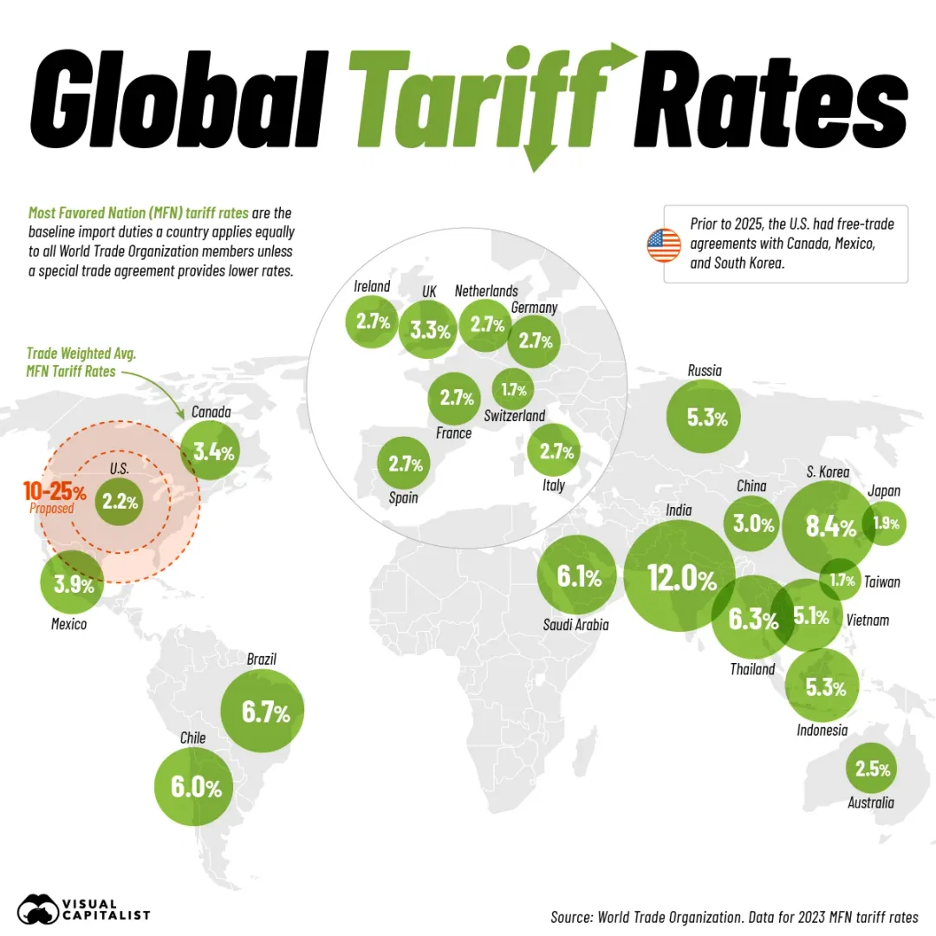What is a tariff? A tariff is a tax imposed on goods imported into a country, and the company that brings those goods into the country typically pays it initially, though the cost can be passed on to consumers in the form of higher prices. Higher prices equal inflation.
Do you know when the first tariff was levied? The Tariff Act of 1789, signed into law by President George Washington on July 4, 1789, was the first major piece of legislation passed by the First Congress, establishing the first national source of revenue for the newly formed United States.
On April 2, President Trump announced a series of steep new tariffs, including a 24% tariff on Japan, a 26% levy on India, and a 49% tariff on Cambodia. These come along with a 10% baseline tariff for all countries, set to take effect on April 9th. For context, many of the world’s largest economies have average trade weighted tariff rates below 5%.
The new policy assumes trade deficits in and of themselves are bad and that the world economy is a zero-sum game. Trade deficits are part of having the worlds reserve currency and we do NOT want to lose that status… Those dollars come back home in many forms. Much of it goes to buying our debt, but also all sorts of goods and services, including stocks.
I don’t know if this is “The Art of the Deal” or if this is a long-term strategy… I hope it is the former and not the latter.

